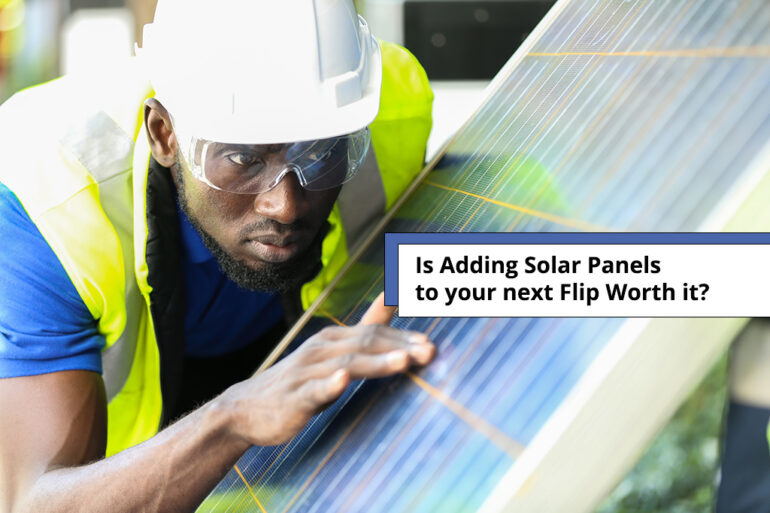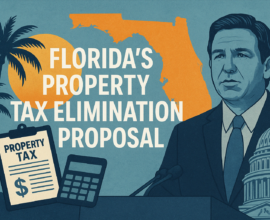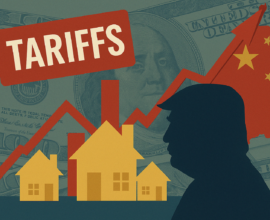Is Adding Solar Panels to Your Next Flip Worth It?
Flipping is a research-intensive affair that requires, among other skills, extensive knowledge, planning, timing, and good judgment to pull off successfully. The get-rich-quick face given to the industry by TV shows couldn’t be more misleading and drives prospective investors to make needless and avoidable flipping mistakes.
Just as many things can go wrong as they can go right in a flipping venture. The drastic drop in US home flipping rates and gross profits in the first quarter of 2021 after a decade-long upward market validates this.
A report by ATTOM Data Solutions reveals that 32,526 single-family homes and condominiums contributed to the total home sales in Q1 2021. At 2.7%, it is a huge drop from 7.5% recorded in the same period of 2020, continuing the 4.5% depreciation in Q4 2020. Profit margins declined in a similar fashion.
Although profits also fell between Q4 2020 ($71,000) and Q1 2021 ($63,500), they performed better than Q1 of 2020 ($62,000). Median prices followed the profits, hitting the all-time low since 2011.
Wow, that’s a lot of Qs, right? What these numbers tell us is that flipping has risks and opportunities like any other market. The ability to beat the odds depends on an investor’s strategy, use of assets, and long-term goals.
In fact, you could be the one person thriving in a declining market if your strategy stands out and gives you a competitive advantage. Could adding solar panels to your next flip be the dealmaker in your strategy? Well, there are a couple of things to consider.
Renewable Energy and Climate Change
The race to a green planet has been on for decades, forcing governments to lay out infrastructure to achieve renewable energy goals. In America, 325 cities are committed to climate action while several states have regulations to meet their quota of renewable energy.
Solar energy makes up 3% of the total renewable energy used across sectors in the United States. The US Energy Information Administration projects that photovoltaic (PV) solar will continue to rise as the leading source of renewable energy up to 2050.
If President Joe Biden’s ambitious goals are anything to go by, we should expect to see green energy numbers jump in a very short time. In the administration’s proposed 10-year plan, the US will achieve 80% clean energy by 2030 and achieve a carbon-free electricity sector by 2035.
If adopted, solar energy will get its share of the multitrillion-dollar budget through incentives and tax credits. Modernizing the power grid for maximum harvesting of solar energy is also in the program. With the investment, solar is expected to produce over 40% of power by the time of transition to 100% clean energy.
the solar market recorded an increase in its installed solar capacity by 46% over Q1 of 2020
Solar Market Insights
The Solar Energy Industries Association (SEIA) and Wood Mackenzie Power & Renewables US Solar Market Insight release quarterly reports on US solar markets, covering trends, statistics, and forecasts. Its most recent 2021 Q2 report indicates the solar market recorded an increase in its installed solar capacity by 46% over Q1 of 2020, making the first largest Q1 record.
Also, PV solar injected 58% of new electricity-generating capacity. Typical to market segments, residential, community, and commercial solar all declined in Q4 2020. However, commercial and residential solar climbed 19% and 11% respectively over Q1 2020 as community solar fell by 15%.
Overall, utility solar installed 3.6 GW to set a first-quarter record. Wood Mackenzie predicts the industry will break annual installation records in 2022-2024.
Clearly, the real estate sector is an important component of mainstreaming solar energy. Homeowners and investors play different roles and enjoy benefits that come with them.
Advantages of Solar Panels to Homeowners
According to 2021 PEW research, most Americans approve of wind and solar power for environmental sustainability. Seven in ten voted for generating electricity from solar panel farms over other sources.
Every year, the number of Americans who would consider installing solar panels in their homes goes up. It isn’t a coincidence — a poll by the Yale Program on Climate Change Communication reveals that Americans are willing to take action on climate change although only a few do.
However, the positive feelings towards the environment provide a background for incentives and benefits to push them to action. Some of them are as follows.
Cost Reduction in Bills
Solar energy is tapped freely from installed solar panels. Installing solar panels comes with a one-time cost and breaks even within ten years. The cost of buying solar panels has come down by 70%, making it quite affordable (between $10,000 and $30,000 for an average home).
PV panels afford owners relatively low bills from fossil power because they rely less on it. Some never do if connected to battery storage systems. Additionally, surplus power contributed to the grid in summer can be used to offset bills incurred during less solar productive times of the year.
Solar Tax Credits
Both federal and state governments offer tax credits, exemptions, rebates, and other rewards to encourage solar installation. The Investment Tax Credit (ITC), extended for another two years, comes with a 26% tax credit on solar panels purchased and other costs related to installation. This significantly lowers the overall cost of installation. Should Biden’s direct pay proposal go through, homeowners could receive their tax credits in cash.
An example of state exemption is the May 2021 South Carolina legislation that exempts third-party residential owned and leased solar systems from property tax.
Solar Renewable Energy Credits (SRECs)
SRECs are rewarded for every 1,000 kilowatt-hours (KWh) to SRECs producers. They exist through legislation called Renewable Portfolio Standards (RPS) that requires state utilities to purchase SRECs when they cannot produce the minimum solar in a year.
Homeowners who meet the specifications can apply to get certified and registered to create SRECs. Although SRECs apply only to states with RPS, solar systems can be registered outside of their state of installation. Currently, Washington DC and 35 states have RPS.
How Investors Benefit from Solar Panels in Flips
Redevelopers are motivated by the rewards attached to the solar power industry. They offer buyers the opportunity to have energy-efficient homes and are guided by customer needs. Flippers thinking of adding solar panels to their flips are in a unique position to provide serious value.
Increase in Resale Value
Just like other renovations, adding solar panels to a flip automatically raises property value. The question, then, is whether the addition improves its quality and desirability.
According to Energy.gov, adding PV solar to a home is seen as an upgrade rather than just regular enhancement. A study commissioned by the United States government says solar paneled homes have increased value over regular flips. The same report says buyers are willing to pay premium prices for them, and that they sell quickly.
Solar energy happens to reach its maximum production capacity during electricity peak hours. Therefore, solar paneled houses offer a higher value proposition.
Value can also be drawn from extended roof life. A roof gets some protection from the harsh sun due to the panels. Home temperatures can significantly lower because of the direct sun obstruction.
Zero Sales Tax
Solar systems have no sales tax. As the system direct buyer, a flipper is the beneficiary of this tax exemption. Also, solar paneling a home is considered a capital improvement, hence it is tax deductible.
This tax relief can be used to offset short-term capital gains. It is a clever strategy because not only is the home upgraded, but it helps reduce or clear the usually steep capital gains.
If you use a home equity loan on your flip to make the improvements, you are entitled to further tax deductions.
As mentioned, states have their own incentives for energy efficiency and renewal. Investors can find out what’s on offer for them on the provided database.
Support for Demonstrating Leadership
Thousands of companies led by bigwigs from various industries, including Facebook, Tesla, and Microsoft, are partnering with communities either by financing, buying, or producing clean energy. This not only helps them create platforms for joint innovations but improves their image, thus attracting more business.
Smaller players in the partnerships receive valuable support from stakeholders as well as position themselves to sell more and better. Flippers too can join in and enjoy this market by adding solar panels to their flips.
Make the Smart Choice for Your Flip
Solar panels are not wands that magically turn around investments to bring in massive profits in record times. For them to work, investors must have proper strategies that can be complemented by the booming solar power industry.
Solar panels can absolutely create more value, add profit, and get you environmental kudos from the entire community. Do not overlook solar panels on your next venture.








I am a appraiser in NW Florida. They add about 50% of the cost to the value. I have done several appraisals on these kinds of properties. What would the new family want more a pool in the back yard or a bunch of ugly panels on the house for some free electric in 10 years. Cost about the same. Average home ownership is about 5 years so you are not even in the house when you get free electricity. Also efficiency degrades to 75% at the 10 year mark for most of the units. at 20 years 50% and time for new ones. These are a very bad investment at this time. Also a lot of people don’t like they way they look so you defiantly don’t want them on the front of the house.
I agree with you, that it’s not the best “investment” for a homeowner, but I think the article’s point was about the flip, investor adds them for a “wow factor” to make them stand out, gets brownie points with the environmentalists, leadership example etc.. “Local Investor Pledges Green Energy Sources On All Future Projects” – get some nice headlines, reputation, networking potential.
I actually considered them until I read about the pricing, the maintenance – never for my own house at these rates. Would I consider them for a flip? Absolutely (consider).
They are a poor investment when you only get a 50% return. Money is better spent on other upgrades. I have been doing this for 30 years and less than 1% of buyers ask how thick are the walls and how much insulation does the house have. Buyers buy on the visual. They walk thru a house in 10min make a decision. A lot of people don’t like the look of them on a house. Buyers will definitely go WOW when you tell them the house is priced 35k more with the panels. Bigger issue it most likely won’t appraise with them if they are only worth 50% of what you pay for them. 30K would put a wow kitchen appliances. Wolf Stove Subzero fridge, etc. 30k will do a complete marble master bath. This is a very poor investment for a flip in my opinion. It would interesting to hear from anyone that has tried this. This may work in Portland Org I suppose, but not in NW Florida. Another thing if it is a expensive house they can afford the bill and don’t care unless you are Elon Musk. I see them more on low end houses because they are sold on FREE electricity. It’s not. Also you need to understand a lender will not loan on a house with a set of panels that are not paid off. So if you put them on sign the agreement and go to sell. Well it have to have the panels paid off or appraise for enough to cover them. Realtors in my area are telling people don’t do this.